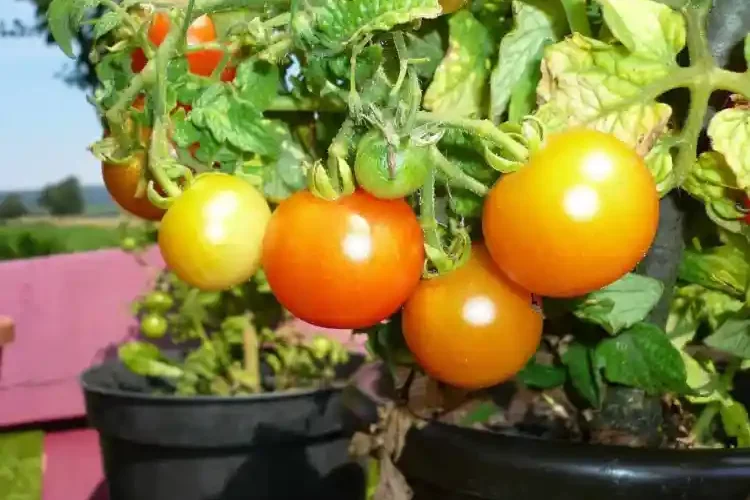Introduction
Container gardening offers flexibility and convenience, making it ideal for small spaces and urban environments. However, common mistakes can hinder plant growth and health. This guide highlights 14 container gardening mistakes to avoid, with insights from government bodies, horticultural experts, and academic research.
Choosing the Wrong Container
Using containers that are too small or lack drainage.
Select containers with adequate size and drainage holes to support root growth and prevent waterlogging.
Using Poor Quality Soil
Filling containers with garden soil or low-quality potting mix.
Use high-quality, well-draining potting mix specifically designed for container gardening.
Overwatering
Excessively watering plants, leading to root rot.
Water plants according to their specific needs and ensure proper drainage.
Underwatering
Not providing enough water, causing plants to wilt and die.
Regularly check soil moisture and water plants thoroughly when the top inch of soil is dry.
Ignoring Sunlight Requirements
Placing plants in locations with insufficient sunlight.
Position containers according to the specific light requirements of each plant species.
Overcrowding Containers
Planting too many plants in a single container, leading to competition for resources.
Follow spacing recommendations for each plant to ensure adequate room for growth.
Neglecting Fertilization
Failing to provide necessary nutrients through fertilization.
Use a balanced, slow-release fertilizer to nourish plants throughout the growing season.
Using Inappropriate Plants
Choosing plants that are not suited for container growth.
Select plants that thrive in container environments and match your climate and growing conditions.
Ignoring Temperature Fluctuations
Leaving containers exposed to extreme temperatures.
Protect plants from temperature extremes by moving containers as needed or providing insulation.
Poor Container Placement
Placing containers in areas with poor air circulation or excessive wind.
Choose sheltered locations with good air circulation to prevent plant stress and disease.
Ignoring Seasonal Changes
Failing to adjust care routines according to seasonal changes.
Adapt watering, fertilization, and placement based on seasonal conditions.
Using Contaminated Containers
Reusing containers without proper cleaning, spreading diseases.
Clean and disinfect containers before reusing them to prevent disease transmission.
Neglecting Regular Maintenance
Failing to prune, deadhead, or clean plants regularly.
Perform routine maintenance tasks to promote healthy growth and prevent pest infestations.
Inadequate Mulching
Not using mulch to retain soil moisture and suppress weeds.
Apply a layer of mulch to help retain moisture and reduce weed growth.
Conclusion
Avoiding these common container gardening mistakes ensures healthier, more productive plants. By following these expert tips and referencing authoritative sources, gardeners can enjoy successful container gardening.
Why is it important to avoid using the wrong container size?
Using the wrong container size can limit root growth and hinder plant development. Choosing an appropriately sized container ensures sufficient space for roots to expand and access nutrients and water.
What type of soil should I use for container gardening?
Use high-quality, well-draining potting mix specifically designed for container gardening. Avoid using garden soil, as it can be too dense and may not provide adequate drainage.
How can I prevent overwatering my container plants?
To prevent overwatering, ensure your containers have drainage holes, water plants only when the top inch of soil feels dry, and avoid letting containers sit in standing water.
What are the signs of underwatering in container plants?
Signs of underwatering include wilting, dry soil, and yellowing or browning leaves. Regularly check soil moisture and water plants thoroughly when needed.
How much sunlight do container plants need?
The amount of sunlight needed depends on the plant species. Most container plants require at least 6 hours of sunlight per day, but it’s essential to check the specific light requirements for each plant.
Why should I avoid overcrowding plants in containers?
Overcrowding can lead to competition for water, nutrients, and light, resulting in stunted growth and increased susceptibility to diseases. Follow recommended spacing guidelines for each plant.
How often should I fertilize my container plants?
Fertilize container plants every 4-6 weeks during the growing season using a balanced, slow-release fertilizer. This replenishes nutrients that are depleted from the soil.
What types of plants are best suited for container gardening?
Choose compact, adaptable plant varieties that thrive in containers and match your climate and growing conditions. Herbs, flowers, and small vegetables are excellent options for container gardening.
How can I protect container plants from temperature fluctuations?
Move containers to sheltered locations during extreme weather conditions, use insulating materials like straw or bubble wrap, and monitor weather forecasts to protect plants from frost and heat.
Why is regular maintenance important for container plants?
Regular maintenance, including pruning, deadheading, and cleaning, promotes healthy growth, prevents pest infestations, and ensures that plants remain productive and aesthetically pleasing.
- Explore THC Infused Drinks in New York - May 9, 2025
- The Latest in THC Seltzers Across Texas - May 9, 2025
- Top THC Infused Drinks Available in Oklahoma - May 9, 2025





